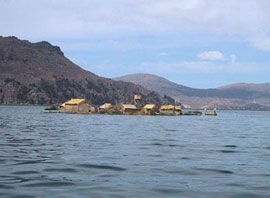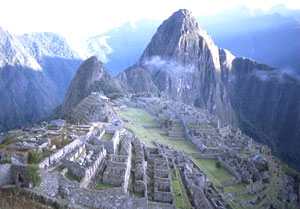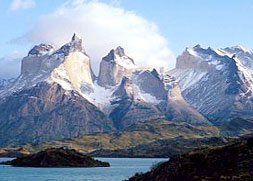|
|
|
|
Top Peru Destinations:
Lima hotels Cusco hotels Arequipa hotels Iquitos hotels Miraflores hotels See more hotels in Peru
World Destinations:
 Guides » Peru » Ancient and Current History of Peru Guides » Peru » Ancient and Current History of PeruAncient and Current History of Peru
What you find when visiting the country of Peru is multiple layers of civilizations. This among other things is what makes Peru such an interesting place to experience. For instance, there are a number of beautiful colonial cites, carefully preserved by Spanish conquistadors, the every magnificent Machu Picchu also known as the lost city, or Cuzco, the Incan capital. However, just as you can walk among ancient ruins and get a firsthand glimpse into ancient history, you will also turn to see massive complexes of glass and chrome.
Although South America is known around the world for its incredible natural beauty, one of the most impressive countries is Peru. Obviously, the Andes mountain range is something to behold, currently home to millions of aboriginals, speaking Quechua and living in the traditional way, which to us, seems backwards and incomprehensible. About 50% of Peru is comprised of the Amazon Basin, considered one of the top 10, biodiversity areas in the world. In addition, Peru boasts quaint fishing villages, huge sand dunes, wonderful farmland, and trails off the beaten track.  Even though there are some areas of Peru under a United States warning, many regions to include Cuzco and Machu Picchu are considered safe. The key when traveling to Peru is to use good common sense, which means avoiding large crowds, any type of political gathering, and working with a local guide who is aware of the areas considered off limits due to drug lords and Shining Path guerrillas. Even though there are some areas of Peru under a United States warning, many regions to include Cuzco and Machu Picchu are considered safe. The key when traveling to Peru is to use good common sense, which means avoiding large crowds, any type of political gathering, and working with a local guide who is aware of the areas considered off limits due to drug lords and Shining Path guerrillas.
The first people to settle in Peru were Nomadic hunters and gatherers who lived in caves along the various coastal regions. Today you can find one of these caves called Pikimachay, considered the oldest inhabited caves dating back to 12,000 BC. For these people to survive, they grew cotton, squash, chili peppers, and beans. However, by 4,000 BC, Chavin had introduced other ways of life to include agriculture, weaving, and religion. When Chavin suddenly disappeared in 300 BC, several other types of culture over the following centuries were discovered. By the 15th century, a large portion of the country fell under the Inca Empire, which also had a strong impact on Chile and Colombia. Between 1526 and 1528, a Spanish conquistador by the name of Francisco Pizarro had come to explore this land, focusing his attention primarily around the coastal regions. When he arrived, Pizarro discovered the many riches of the Empire. With this knowledge, he returned to Spain, raising funds and gathering workers to return for further exploration. Pizarro marched into Cajamarca in 1533, capturing the Atahualpa, the Inca emperor but once the ransom was placed, the emperor was executed. By 1541, the city of Lima was established and sadly, Pizarro was killed. For the next two centuries, this was a peaceful country. Lima soon became a major center for the Andean nations but as Indians began being exploited by their masters, a devastating uprising broke out in 1780 under the direction of Tupac Amaru II. Although short lived, most of the leaders were captured and killed. Peru remained loyal to Spain until 1824 when two outsiders by the names of Jose de San Martin and Simon Bolivar liberated Peru. The next challenge Peru would face was the War of the Pacific, which was soon followed by a dispute with Ecuador over borders. Unfortunately, we still see a country with major challenges to include poverty and unemployment levels. The good news is that the economy is beginning to grow. Therefore, while Peru had a rough start, the country is becoming stronger and stronger. To the south of Peru is Chile, Bolivia is to the southeast, Brazil to the northeast, Ecuador to the northwest, and to the north is the country of Colombia. The country is split into three regions. First, there is the coastal belt, second, the Andean mountains, and finally, the Amazon Basin. The coastal belt is primarily desert with a few major cities. In the Andes, two regions exist, the Oriental and the Cordillera Occidental. However, a third region known as Huascaran reaches 22,200 feet, making it the tallest mountain in Peru. Finally, you have the Amazon Basin, stunning tropical lowland, draining into the Ucayali and Maranon Rivers. Because of such land diversity, you will find an abundance of marine and bird life. Commonly seen are sea lions, penguins, the Chilean flamingo, pelicans, the brown booby endemic, and the Inca tern. In addition, the birds are magnificent to include the Andean condor, small hummingbird, and puna ibis. Now, if you make your way to the Andes, chances are you will spot jaguar, tapirs, and bear. In addition to wildlife, Peru also boasts incredible flora. The country is generally broken down into two seasons - wet and dry, which vary depending on geographical region. For instance, the western slopes of the Andes along with coastal areas are typically dry. The summer months start in December and end in April. Then from May to November, you have the Garua or coastal fog, which makes seeing the sun near impossible. Then, on the Andes’ eastern slope, the dry season runs from May to September with the wet season being the remainder of the year. Peru always has colorful and exciting celebrations. The people of Peru love festivals, which often represent great things in life. During the months of February and March, there is the Carnaval, an impressive Incan festival that consist of street dancing and colorful parades. For the month of July, the people celebrate Independence and in November, Souls Day is a time to enjoy wonderful food and drink. Finally, Puno Day is time when the , where locals dress up in outrageous, colorful costumes and dance in the streets. Of course, the cities of Peru offer tremendous history and culture. Take Lima for example, this city is actually crowded, noisy, and polluted. Even so, it offers excellent nightlife, wonderful restaurants and cafes, and friendly people. South Coast is another area you might consider visiting. There, you can sit back and relax with a glass of white grape brandy. Finally, Arequipa and Lake Titicaca are areas surrounded by majestic mountains, colorful volcanic rock, and colonial religious buildings or perhaps you might want to take a trip to Colca Canyon, the world’s deepest canyon. As you can see, Peru has so much to do and see, making this an ideal destination for people interested in an adventure. Last Updated: 10/19/2006 3:14:00 PM Mode articles for Peru Although there are many impressive lakes in South America, one stands out above the rest – Lake Titicaca. Bordering on the Bolivia and Peru borders, this massive lake is truly something worth seeing.
Although there are many impressive lakes in South America, one stands out above the rest – Lake Titicaca. Bordering on the Bolivia and Peru borders, this massive lake is truly something worth seeing.... continue >>  Machu Picchu, also known as the lost city, is one of the world’s most spectacular ruins. If you want adventure when visiting Peru, then you must add this trip to the top of your list of things to do and see.
Machu Picchu, also known as the lost city, is one of the world’s most spectacular ruins. If you want adventure when visiting Peru, then you must add this trip to the top of your list of things to do and see.
... continue >>  Located in South America, the Andes Mountain stretches from the north to the south, going along the western coast some 4,500 miles, making this one of the longest and highest mountain ranges in the entire world. When
Located in South America, the Andes Mountain stretches from the north to the south, going along the western coast some 4,500 miles, making this one of the longest and highest mountain ranges in the entire world. When ... continue >> |
|
| | |
|
©2025 HotelsRu.com About us Privacy Site map Ancient and Current History of Peru |
|
 Look for deals on hotels?
Look for deals on hotels?